With the advent of big data resulting from simulation and imaging, visualisation becomes an essential tool for accessing and understanding the generated data. Thus, the SeRC visualisation community serves as a core community within SeRC, whereby the conducted research gives other SeRC researchers the opportunity to analyse their data. As a consequence, traditionally within the visualisation community, the connection to the other communities is central in order to enable a fruitful research output.
A prominent example of this intercommunity work is the long-standing cooperation with the material-science community, in which an interactive Bader analysis application could be developed, which enables interactive visual inspection of the 3D structures of crystals.
In the field of solar-cell design, advanced molecular-rendering techniques enable solar-cell designers and molecular-dynamics researchers to better understand their simulation data. Another central domain area for the visualisation community is medical visualisation. Consequently, new interdisciplinary results could also be achieved, whereby focus lies on large-data analysis and pattern extraction. One example is the novel use of visualisation for the quantitative analysis of knee-movement patterns in time-varying data sets. Furthermore, a visualisation framework for the analysis of bloodflow characteristics based on image acquisition of velocity data for beating hearts (4D MRI) has been developed.
Apart from the intercommunity efforts and applied visualisation work, the visualisation community has made high-impact contributions to the foundations of volume rendering in areas such as:
- Uncertainty visualisation, verification, and error reduction: In the context of fibre tracking in the brain, fundamental aspects of uncertainty have been studied and interactive guidance paradigms have been applied (see figure 7).
- Improving visualisation of boundaries: Fundamental work on volume rendering has resulted in novel ways to deal with tissue boundaries in medical volume data using knowledge based regression of reconstruction kernels (see figure 8).
- Volumetric Illumination: Progressive development of shading algorithms resulting in interactive rendering of multiple scattering events using photon-mapping techniques. (see figure 9).
- Depth complexity in mixed-mode rendering: Development of heuristics that minimise memory footprint on the GPU depth sorting geometry mixed with volume data. (see figure 10).
Besides these research results, researchers in the visualisation community have been involved in the development of the Inviwo open-source visualisation framework. This framework builds the basis for most ongoing projects within SeRC and maximises the synergy between the individual visualisation projects. Furthermore, new industry collaborations have been established. Within this process, the research output of the visualisation community was instrumental.




